How I became one of the 1st female white-water river guides
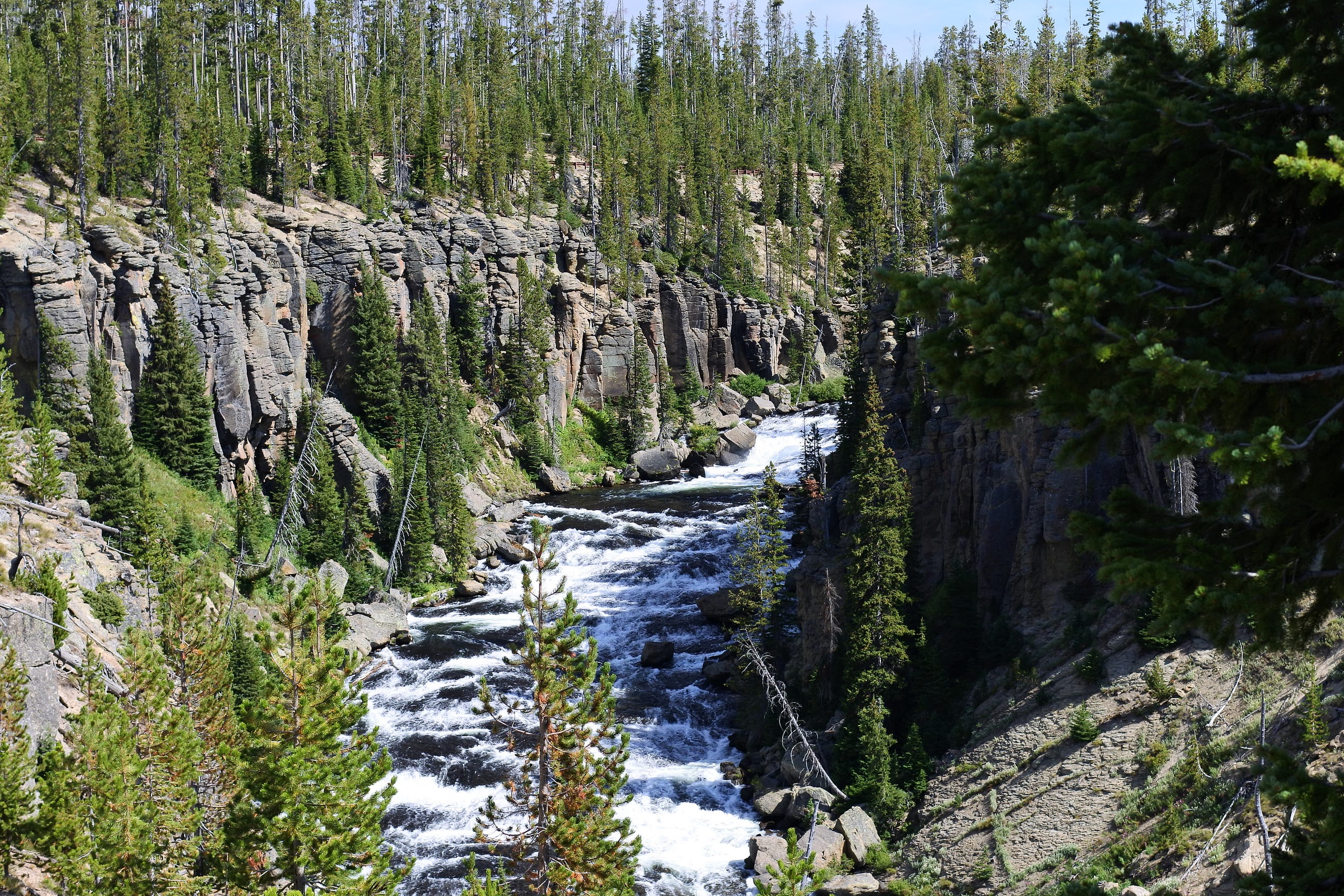
“Have you also learned that secret from the river;
that there is no such thing as time?”
~ Hermann Hesse, Siddhartha
The address I am given is an old farmhouse and barn on a large scruffy property. Tents and tarps cover the dirt. Wooden oars, rubber rafts, ammo cans, black rubber bags, and life vests cascade from the barn. The outhouse is hidden behind the barn. An outdoor shower is hooked up to a bulky wooden water tower. The water heats in the sun and provides enough liquid to hose down a bushel of boatmen. I am in Angels Camp, California, learning how to be a white-water river guide.
Bewildered and shocked I walk indoors. In the farmhouse, dishes covered with caked-on scraps of food overflow the sink, inside the toilet is a thick black rim, pee runs down the outside. The saggy couch in the living room is covered with food stains and cigarette holes. Sweaty T-shirts mingle with the scent of moldy food and musty damp towels. A few bare mattresses, with sleeping bags thrown on top, line the floor in each of the two bedrooms. Sleeping bags spread throughout the house, spilling out to the porch.
River talk, expressions I’ve never heard, places I can’t imagine fill the air. An entire language system describes the hydraulics of ebb and flow of the river that I’m unfamiliar with. Every rapid and sandy beach has a name. Every boulder etched into memory. Words swirl around me, fueling flames of anticipation and fascination.
There are about forty yummy, tan hard-body guys, all camped out in this one house and grounds. In the beginning, the boatmen are standoffish. Who is this thirty-year-old divorced woman, ponder the twenty-year-old boatmen? Many of these guys have been boating for years. This house was not filled with a bunch of dudes getting drunk and talking dirty. What started out as a Boy Scout leader taking his scouts on river trips grew into a world-class boating company. Several boatmen have known each other since childhood. It is almost like a family, really more like a tribe. A distinct breed, who has a passion for water, faces their fear, and encounters personal river initiations. Every night stories flow about the perils and excitement of distant rivers. I want to row all of these exotic treacherous water passages, and eventually, I do.
I arrive with only a ground cover and sleeping bag. One of the guys lends me his pale blue plastic tube tent. I run a rope through the tent and tie each end to a tree. Voila, my new home. The boatmen watch me paint oars, patch boats, and drive trucks hauling boat trailers. I work for free with the hope that I will learn to row a boat. One by one they warm up to me and we become wonderful friends. One day Amy arrives. At last, I’m not the only female learning the ways of the river.
If one of the boatmen has space on his boat I came along to practice and learn. Every day is humbling. I’ve just spent three months trekking at high altitude in Nepal so my legs are hard as a rock. But my wimpy, skinny arms are not strong enough to hold the thirty-pound oars out of the water, much less row a boat through raging rapids. It takes weeks of messing around with the oars before I’m strong enough to move them through the water to maneuver the rubber raft. The guys muscle their way through the rapids and down the river. It is very clear, the only way for me to be a “boatman” is to learn to read the water, and surrender totally to the river.
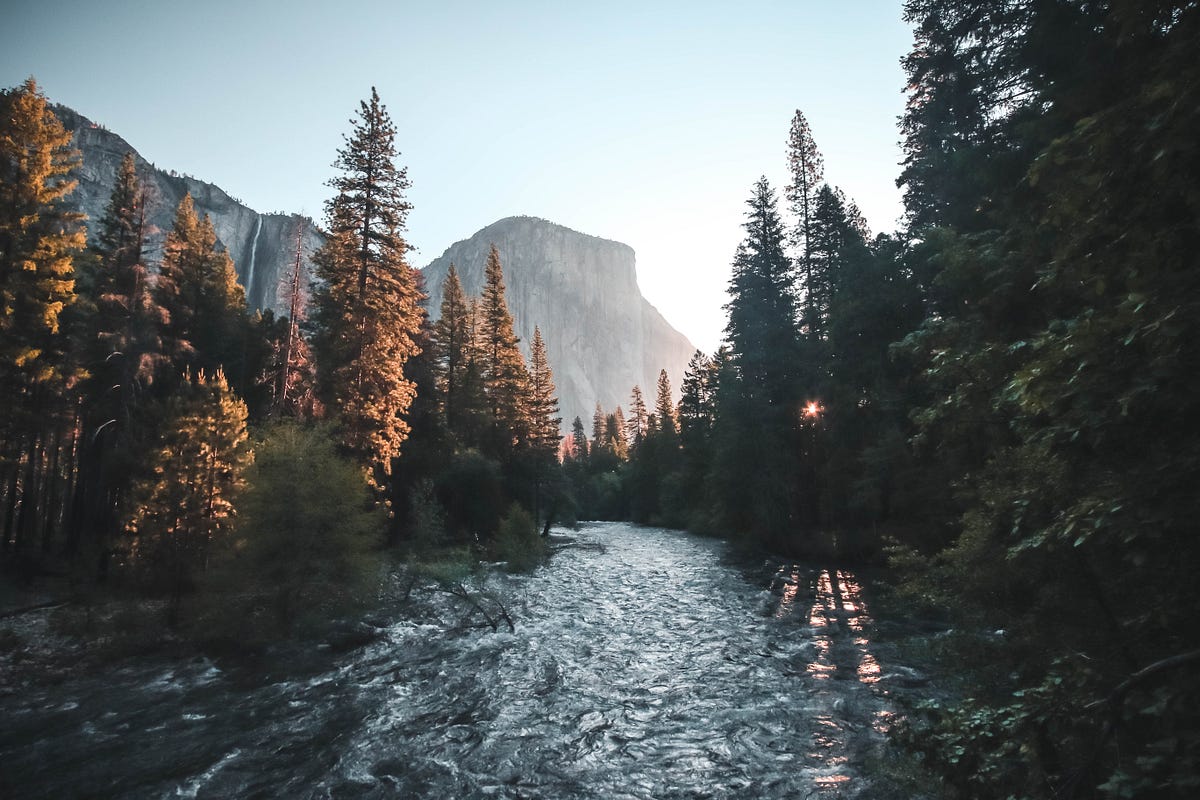
Every river has a different system of licensing boatmen. To become licensed on the Rogue River I need to pass two exams. A written test administered by the State of Oregon including flora and fauna, history, river etiquette, and safety, and the rowing exam where every rapid is judged and graded by a certified examiner.
The dude in charge of my boat for the five-day rowing exam doesn’t want a woman to pass. I am given the shittiest boat imaginable, an old patched rubber bloat of a boat that leaks air. Soggy boats are incredibly difficult to maneuver on technical rivers like the Rogue. Technical rivers require quicker maneuvers of the boat to dodge the boulders in the rapids. Usually ‘whippies’ or thinner oars are used on the Rogue. Thin oars are easier to make the necessary minute adjustments to row with perfection. I am handed ‘stouts’ that are used on high-volume rivers like the Grand Canyon. They are heavy, bulky, and less efficient on rivers that require a different type of skill like the Rogue.
Plus, I trained on oars with pins where I can lean my full body weight into the oar to maneuver through the rapids. The twisted off-center boat frame has oarlocks, a U that holds the oar. The action takes place in the wrists. On every major rapid, tears flow while my delicate arms and wrists finesse the heavy oars through the turbulent rapids. Each morning my hands are cramped in a circle and I need help straightening out my fingers. I pass both tests, much to the dismay of some of the guys who didn’t want a woman invading their private boatman territory.
On the Rogue, my boat is always the last one the passengers hesitantly choose, only guys are deemed fit to row a boat. This is 1976 before it is ‘in’ to be in shape. Nike hasn’t sold women on having muscles yet, so we are still expected to be rather helpless, weak, and dependent. Who on earth would want to get into a chick’s boat? Here I am, sun-bleached hair, tanned muscular body, turquoise bikini, knife strapped around my waist, knife tip tied to my leg, and sunglasses.
By about day three after watching me row, people line up for my boat. On one trip, my boat already reserved, I turned away a famous movie director for the big rapids of Blossom Bar. He was pissed; he was accustomed to getting his way and not used to having a woman question his authority. Rather than riding the rapids with any of the other boatmen, he chose to climb the slippery treacherous rocks around the raging rapids.
I love watching passengers transform. On day one the passengers leave behind their usual lives, watches, and schedules. They are stripped of the known, familiar clothes exchanged for the vulnerability of a bathing suit. By the third day, the frantic energies of the city start to dissolve, and the passengers relax into the beauty of nature.
We are in charge of the passengers’ lives for the next five or six days, their food, safety, where to camp, and their emotional well-being. Nature has her own rules. The other boatmen and I guide the passengers not only into the unknown wilds but also into the uncharted internal territory. When fear arises, the passengers turn to me for help.
Each trip is unique. We find out who our passengers are and plan the entire event from food, to lunch stops, to camping places, to give everyone the most pleasurable, memorable trip imaginable. The food ranges from fresh grilled salmon, to a rack of lamb roasted over an open fire, to peanut butter and jelly sandwiches. There are many camp-site choices, the natural carved-out rock water slide ending in a waterfall, the hike up a lush canyon, the spot where people can swim through the rapids then walk upstream and do it again, or high cliffs to dive into the river.
At some campsites, I sneak out to pick blackberries and make a delicious blackberry cobbler in the Dutch oven over the open campfire. I arrive at dinner in a full-length dress with a bouquet of flowers. We surprise the passengers with hand-cranked homemade ice cream. One evening a passenger comments, “You get paid to have this much fun?” We have an amazing time creating the menu and staging life-changing vacations.
I’ve heard from passengers who switched jobs and careers, shifted their lives, and had a new outlook on life due to the transformation that took place on the river.
The Rogue is known for its wildlife. Osprey pluck salmon out of the river, great blue herons float past heading to their nests high in the trees, deer come to the river at sunset to drink and brown bear play at the water’s edge. At the river’s edge baby mergansers, fluffy reddish-brown with patches of white, trail their mothers. By the end of boating season, fuzzy down turns into feathers, necks elongate, and the ducks take flight.
My ears perk at the oozing water gently flowing over curved, smooth river rocks. A canyon wren chirps while an osprey flies overhead, caught in the orange disk of the setting sun. At dusk, the smell of the canyon walls shifts as the air currents move upstream. The warm musky fragrance of the earth exudes as the heat from the soil moves up the surface of the ravine and the earth cools down for the night. The aroma and the song of the canyon wren enhance the closing of daylight. The long silver, gold, and taupe rays of sunlight glide across the silky smooth midnight blue river.
I always sleep away from the passengers. One morning I open my eyes and there standing above me, one front leg on each side of my shoulders, nose a few inches from my face, looking me straight in the eyes is a ten-point buck. Waves of joy and delight fill my body. We look in each other’s eyes for who knows how long, he slowly backs up and disappears in the wilderness. I am so happy. I love deer, always have. When I was I kid and we went camping I used to collect lichen and feed the deer out of the palm of my hand. I feel so blessed to have this massive animal connect with me in such a profound way.
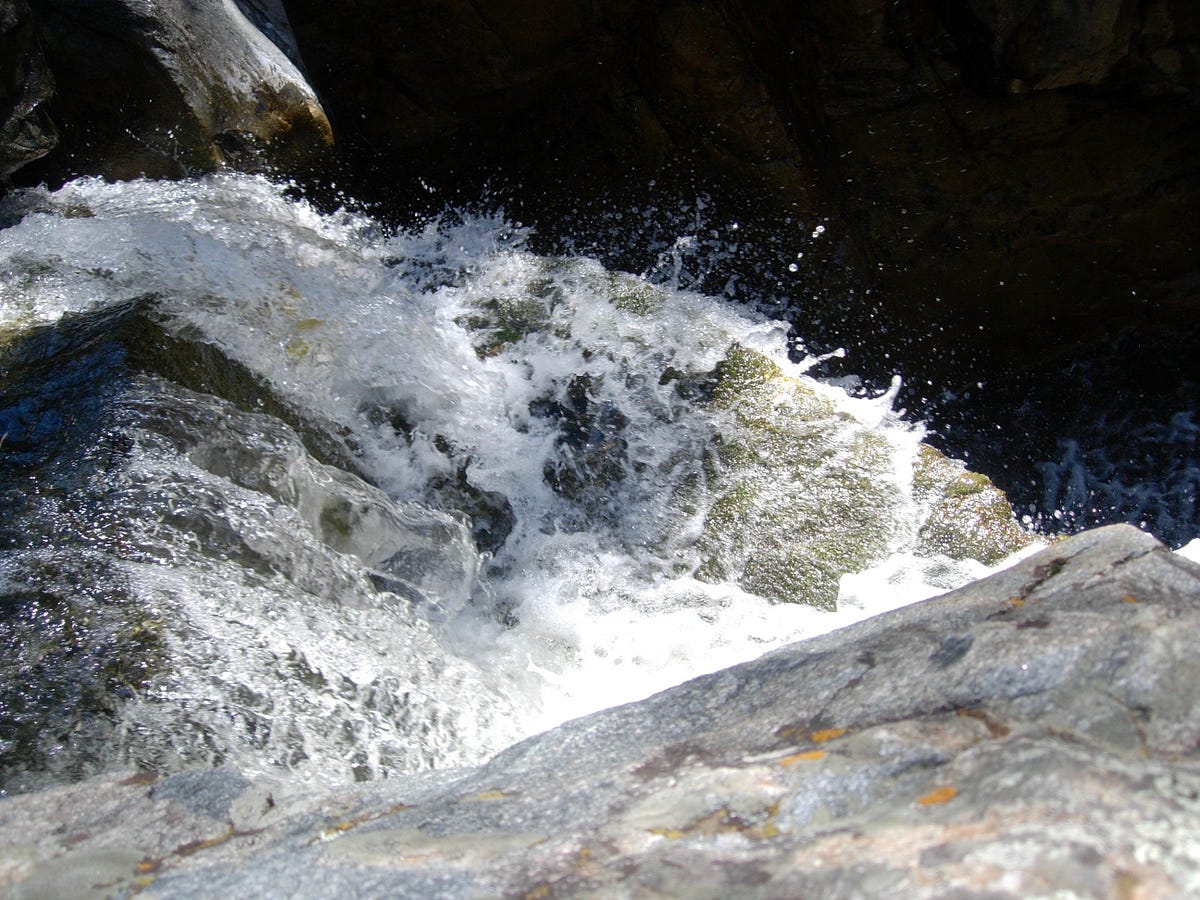
As I approach enormous rapids, a wall of fear arises that almost leaves me paralyzed. Over time I discover how to transform the fear and place it behind me, bequeathing me the power to gracefully guide my boat through the thundering, gigantic rapids. On the days of the biggest rapids, I dress in my bikini with a mid-thigh length flowing blue and white wave kimono, cinched down with my orange Mae West life jacket.
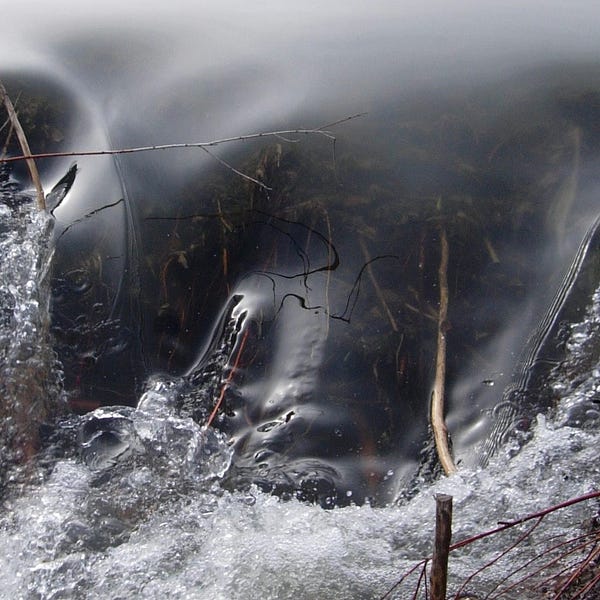
The sun glistens on the round beads of water hanging on the end of my oar, and the smooth velvet of the tourmaline blue river flows into a V. The water slides along each side of the V and ripples like the ruffle on the edge of a satin pillow. The center of the V is as smooth as silk.
If my boat is lined up perfectly with the V, it is a straight shot until the next boulder, bend of the canyon, or drop off. The water cascades down to the apex of the V stomachs drop and waves pound on each side of the boat, dumping buckets of shivery cold water in on all sides. My sleeves billow in the wind as I hurl my boat through the life-eating rapids.
On my right is a sheer, hard 32-foot high granite wall; on the left is a razor-sharp rock the size of a living room. In between is a narrow, thundering shoot barely wide enough to propel my boat through while ensuring that my passengers are secure and safe. As the river rumbles, the roar hits all the way down to my toes.
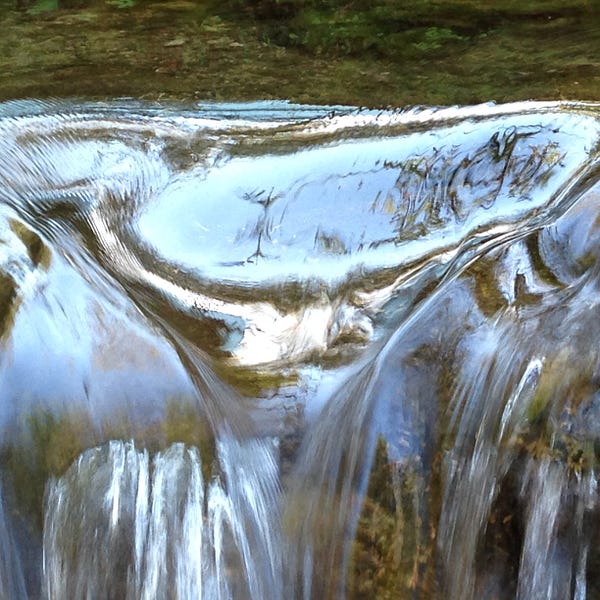
At the top of a rapid, the water becomes silky smooth, right before it cascades down a narrow path.
The bigger the rapid, the deeper the powerful undercurrent. The top of the water feels like silken glass, and underneath torrents surge, rumbling along the riverbed.
It’s the most magnificent feeling to connect to the deep raging undercurrent and at the same time sense the bottom of my boat floating on the smooth satin iridescent water.
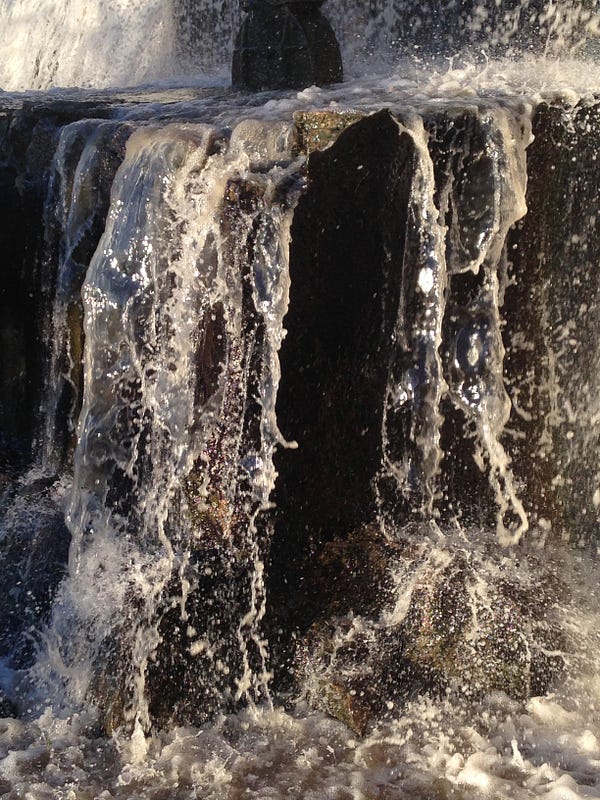
A few times, as I put my oar in the river at the V’s beginning point, the glistening water, the oar, my hand, my body, the river, and the boat are all one: one unit, one being, one movement.
Time stands still.
There is infinite time to lift my oar, to maneuver the boat to the right so that it is sideways to the river and to lean my full body weight onto the oar so that the boat swivels 68 degrees to merge with the upstream current just short of the eddy line.
Each move is filled with perfection and grace. There is no separate I; there is only the sun, river, boat, and my passengers.
At the bottom of the rapids, my passengers and the people viewing from shore all say, “What on earth just happened?” Everyone experienced the stopping of time, the infinite space-time continuum. This transcendent moment ripples out, as everyone experiences this opening of time, the union of different levels of reality and the connection to the flow of all that is.
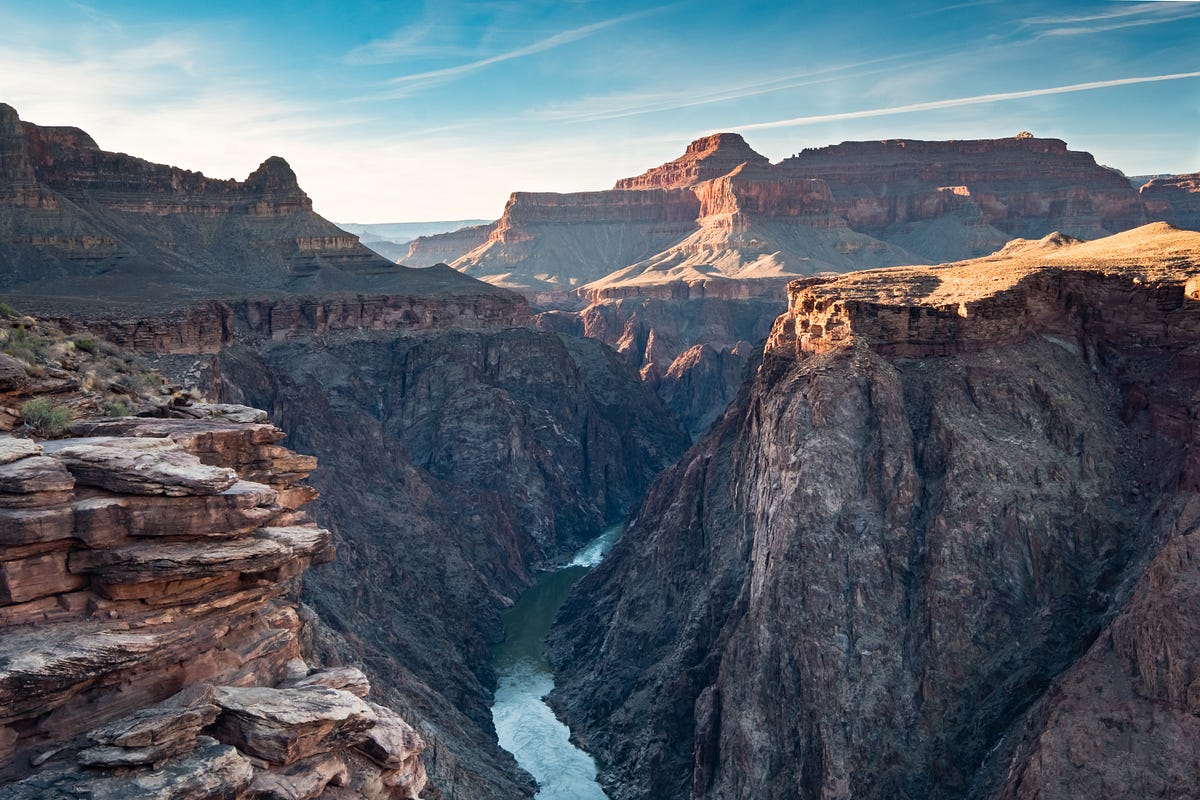
On my first trip down the Grand Canyon, Amy and I share a boat. In order to become certified to row passengers on the Grand, we need to make three trips down the river and row every rapid. This is a luxurious twenty-three-day private trip; it is rare to have that much time in the canyon. We are going from Lees Ferry, Arizona to Lake Mead, a 297-mile trip.
The Colorado River etched its course through the canyon at least seventeen million years ago. The canyon walls soar up over a mile exposing layers of geological history. The majestic beauty and awesome rapids make this one of the world’s greatest rivers.
Every day the rapids change depending on how much water is released from Glen Canyon Dam. Before every big rapid, we tie up our boats and scout the water to see how we can come out alive without flipping the boat. We are at mile 17.1, upstream from House Rock, the second-largest rapid on the Grand. We confer on the best possible route. The path is clear; head in on the right, put my oar in just below the bolder, crank a hard left, turn my boat, ferry across right as fast as I possibly can, turn a hard right, then row like hell with all my might to the right navigating exactly between the gargantuan keeper hole and the sharp stone wall of the boulder.
Keeper holes are enormous vortexes of water large enough to suck down an entire boat, passengers, and gear. The river has you in her grips and she’s not letting go. If you leave on your life jacket and fight your way to the top, you will drown. The only way out is to take off your life jacket; dive down into the center of the spinning vortex, down to the bottom of the river, and escape downriver.
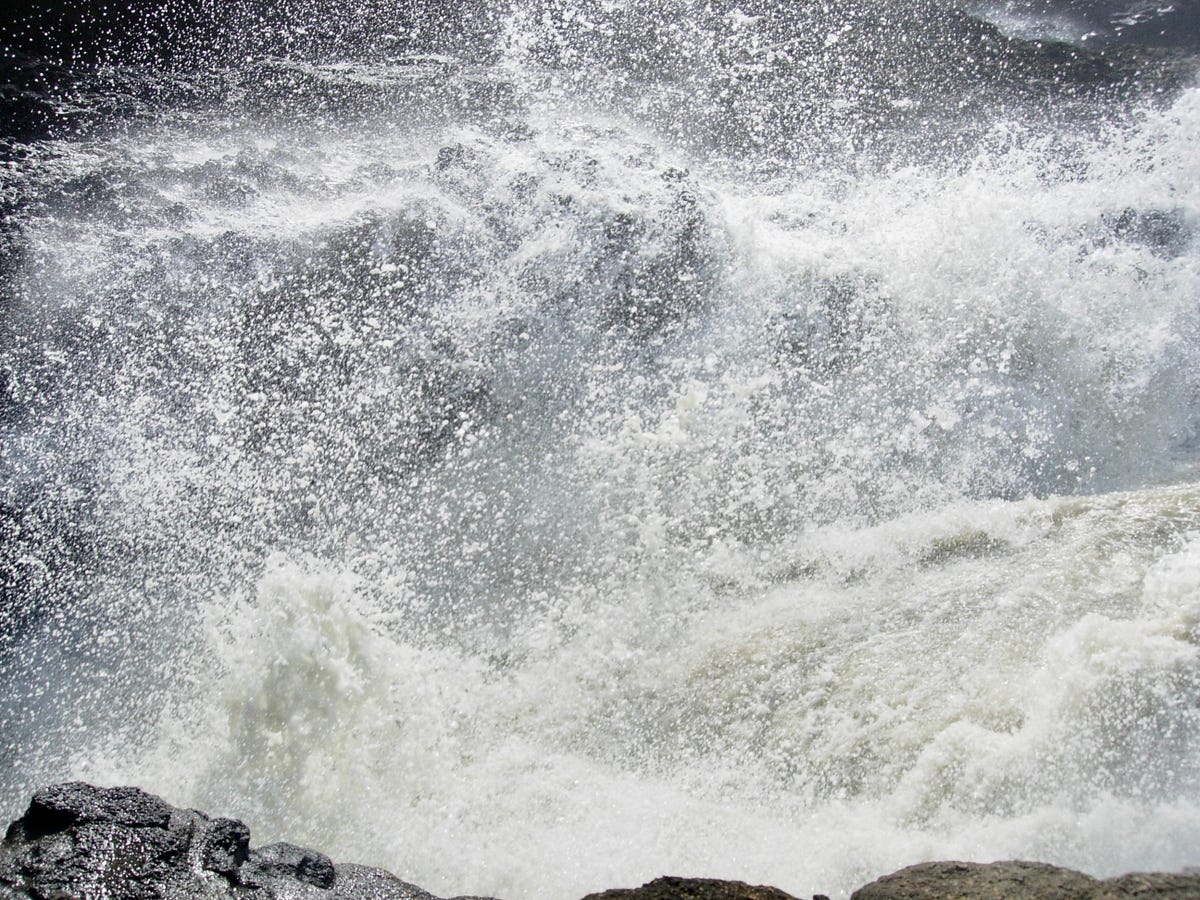
Tears run down my face from the pain in my arms and hands as I heave every inch of my body to the high side. My right arm is shoulder deep in the river, my left oar flailing around in the sky, the boat is riding on its side, bottom clearly exposed. Will we flip?
Amy is screaming, “Row like a son-of-a-bitch,” as she lunges to the high side of the boat. I hurl my entire body against the right oar; the momentum of the oar corrects the boat mid-rapid. My boat safely slides beside the edge of the keeper hole to my left.
At the end of the summer, coming off a twenty-three day Grand Canyon river trip looking in a mirror, I am shocked to see my muscles, my river worn wrinkled skin, and the calluses on my hands. After my first hot shower in what feels like an eternity, I dig a semi-clean long-sleeved blouse out of the bottom of my sandy rubber black bag. When I lift up my arms to brush my hair, my bulging biceps rip the sleeves of my blouse apart.
This was years before it was cool to be fit and muscular. In 1976, women are expected to be helpless, docile, and subservient.

An excerpt from my memoir, Unseen Connections: A Memoir from Pain and Violence to Joy.
